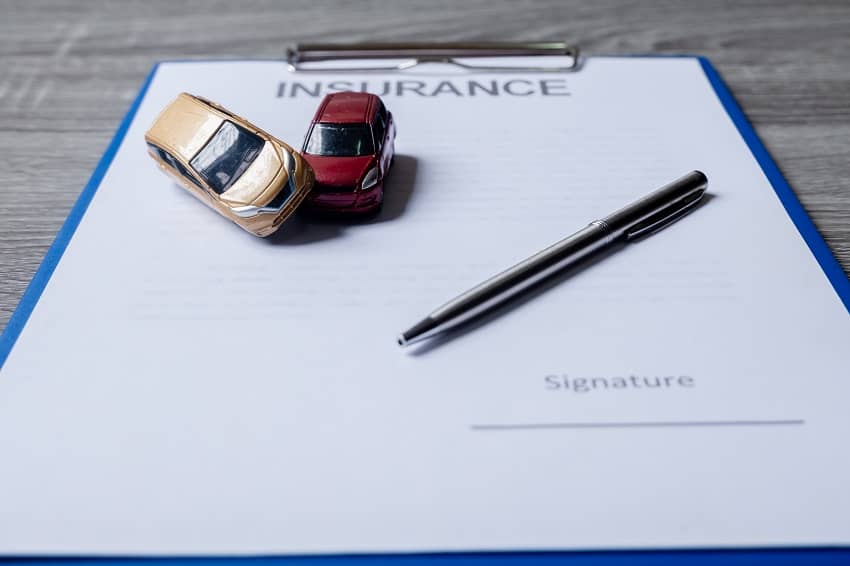A deductible car insurance is the amount of money you agree to pay out of pocket before your insurance provider covers the rest in the event of a claim. It is an essential component of car insurance policies and is typically set by the policyholder when the policy is purchased.
Deductibles can vary and can affect the cost of your premiums. By opting for a higher deductible, you can often lower your monthly premiums, whereas a lower deductible may mean higher premiums. Understanding your deductible is crucial in fully comprehending the terms and conditions of your car insurance policy.
Table of Contents
Understanding Deductible Car Insurance
What Is A Deductible In Car Insurance?
A deductible in car insurance refers to the amount of money that you as the policyholder are responsible for paying before your insurance coverage kicks in. It is the portion of the claim that you agree to bear in case of an accident or damage to your vehicle.
Here are some key things to understand about deductibles in car insurance:
- A deductible acts as a safeguard for the insurance company, ensuring that you have some financial responsibility in the event of a claim.
- The deductible can be a fixed amount or a percentage of the total claim, depending on your insurance policy.
- The deductible applies to each claim, meaning that you need to pay it every time you file a claim for damages to your car.
- High-value claims have higher deductibles, while smaller claims may have lower deductibles.
How Does A Deductible Work?
To better understand how a deductible works in car insurance, consider the following points:
- Let’s say you have a $500 deductible and your car sustains $1,500 worth of damage in an accident.
- As the policyholder, you would be responsible for paying the deductible, which is $500 in this case.
- Once you pay the deductible, the insurance company covers the remaining $1,000.
- If the cost of repairing your car is less than your deductible amount, it may not be worth filing a claim.
In short, the deductible is the portion of the claim that you are responsible for paying out of pocket before your insurance company provides coverage.
Different Types Of Deductibles
Car insurance policies offer different types of deductibles. Here are a few common types:
- Collision deductible: This deductible applies when your vehicle collides with another car or object, such as a tree or a pole.
- Comprehensive deductible: This deductible is applicable in non-collision situations, like theft, vandalism, fire, or natural disasters.
- Combined deductible: Some policies combine both collision and comprehensive deductibles into a single deductible.
- Zero deductible: In some cases, insurance companies offer zero deductibles, but these policies may come with higher premium costs.
Different types of deductibles allow policyholders to customize their coverage based on their needs and budget.
Pros And Cons Of Choosing A Higher Or Lower Deductible
When choosing a deductible for your car insurance policy, it’s essential to consider the pros and cons of a higher or lower deductible. Here are some key points to keep in mind:
Choosing a higher deductible:
- Pros:
- Lower premium costs: Opting for a higher deductible often means lower monthly or annual premiums.
- Cost effective for minor damages: If you rarely make small claims, a higher deductible can save you money in the long run.
- Cons:
- Higher out-of-pocket expenses: In the event of a claim, you would need to pay more out of pocket before your insurance coverage takes effect.
- May discourage filing claims: A higher deductible might discourage you from filing claims for minor damages, as it would not be cost-effective.
Choosing a lower deductible:
- Pros:
- Lower out-of-pocket expenses: With a lower deductible, your out-of-pocket costs in the event of a claim decrease.
- Peace of mind: A lower deductible ensures that you have less financial burden when making a claim.
- Cons:
- Higher premium costs: Lower deductibles usually result in higher monthly or annual premiums.
- Costly for frequent claims: If you file claims regularly, a lower deductible might lead to increased premium costs over time.
Considering these pros and cons can help you make an informed decision when selecting a deductible for your car insurance policy. Remember to evaluate your financial situation and risk tolerance to determine the most suitable deductible for you.
Choosing The Right Deductible Amount
When it comes to car insurance, one of the key decisions you’ll need to make is choosing the right deductible amount. The deductible is the amount you’ll have to pay out of pocket before your insurance coverage kicks in. It’s important to select a deductible that aligns with your individual circumstances and preferences.
Here are some factors to consider when selecting a deductible:
Factors To Consider When Selecting A Deductible:
- Risk tolerance: Before determining your deductible, it’s essential to assess your risk tolerance. Consider how much risk you’re comfortable with and how much you’re willing to pay in the event of an accident. Keep in mind that choosing a high deductible can lead to lower insurance premiums, but it also means you’ll have to pay more out of pocket if you need to make a claim.
- Budget and potential savings: Evaluate your budget and potential savings to determine the deductible amount that makes the most sense for you. While a higher deductible may save you money on monthly premiums, it’s important to ensure you can comfortably afford the deductible amount in case of an accident.
How To Determine Your Risk Tolerance:
To determine your risk tolerance, ask yourself the following questions:
- What is your financial situation?
- How much can you afford to pay out of pocket in the event of an accident?
- How likely are you to be involved in an accident?
- Are you a safe driver with a low chance of accidents?
By answering these questions, you can better understand your risk tolerance and make an informed decision about your deductible.
Evaluating Your Budget And Potential Savings:
Consider the following when evaluating your budget and potential savings:
- Assess your monthly income and expenses to see what deductible amount you can comfortably afford.
- Estimate the potential savings you can achieve by selecting a higher deductible.
- Balance the potential savings with the risk of paying a higher out-of-pocket amount in the event of an accident.
Tips For Finding The Optimal Deductible Amount:
- Consider your driving habits and history. Take into account factors such as your commuting distance, the condition of the roads you regularly drive on, and your past claims history.
- Compare insurance quotes with different deductible amounts to see the impact on your premiums.
- Assess your overall financial stability and ability to handle unexpected expenses.
- Seek advice from an insurance professional who can provide personalized recommendations based on your specific situation.
Remember, the right deductible amount will vary depending on your circumstances and preferences. Take the time to carefully evaluate your risk tolerance, budget, and potential savings to find the optimal deductible for your car insurance coverage.
The Impact Of Deductible On Premiums
The Relationship Between Deductible And Premium
The deductible is the amount of money you agree to pay out of pocket before your car insurance coverage kicks in. This amount can have a significant impact on your insurance premiums. Here’s what you need to know:
- A deductible is chosen by the policyholder when purchasing car insurance. It can range from a few hundred dollars to several thousand dollars.
- Insurers often offer different deductible options to policyholders, allowing them to customize their coverage and premiums.
- The deductible and premium have an inverse relationship. A higher deductible typically leads to lower premiums, while a lower deductible results in higher premiums.
- The reason for this is that by agreeing to pay a higher deductible, you are assuming more financial risk. As a result, the insurance company can offer you lower monthly premiums to offset this risk.
How Choosing A Higher Deductible Can Lower Your Rates
Opting for a higher deductible can help you save money on your car insurance premiums. Here’s why:
- When you select a higher deductible, you are taking on more responsibility for covering smaller damages or losses.
- By assuming this additional financial risk, insurance companies reward you with lower premiums.
- If you have a good driving record and rarely make claims, choosing a higher deductible can be a smart financial move. You can use the money saved on premiums to cover any minor repairs or damages yourself.
Calculating Potential Savings With Different Deductible Amounts
Before deciding on a deductible amount, it’s important to consider your potential savings. Here’s how you can calculate it:
- Start by researching the premium amounts for different deductible options with your insurance company.
- Determine the annual savings by subtracting the higher premium from the lower premium.
- Multiply the annual savings by the number of years you plan to keep the policy.
- This will give you the total potential savings over the policy term.
Examples And Scenarios Illustrating Premium Changes
To help you better understand how deductible amounts impact your premiums, let’s consider a few examples:
Example 1: Policyholder A Chooses A $500 Deductible
- Monthly premium: $100
- Over three years, policyholder a pays: $100 x 12 months x 3 years = $3,600
Example 2: Policyholder B Chooses A $1,000 Deductible
- Monthly premium: $80
- Over three years, policyholder b pays: $80 x 12 months x 3 years = $2,880
In this scenario, policyholder b saves $720 over the policy term by selecting a higher deductible.
Example 3: Policyholder C Chooses A $2,000 Deductible
- Monthly premium: $60
- Over three years, policyholder c pays: $60 x 12 months x 3 years = $2,160
As you can see, policyholder c saves even more, paying $1,440 less in premiums over three years compared to policyholder a.
By understanding the relationship between deductibles and premiums and considering your own risk tolerance and financial situation, you can make an informed decision on the right deductible amount for your car insurance policy. Remember to weigh the potential savings against the amount you would need to pay out of pocket in the event of a claim.
Claim Process And Deductible
How Deductibles Are Applied During The Claim Process
During the claim process, deductibles play a significant role in determining the amount you will have to pay for repairs or damages. Understanding how deductibles work can help you navigate the process more effectively. Here are the key points to keep in mind:
- Deductibles are the amount you agree to pay out of pocket before the insurance company covers the remaining expenses of a claim.
- The deductible applies to each individual claim, meaning that if you have multiple claims, you will have to pay a deductible for each one.
- Higher deductibles generally result in lower insurance premiums, while lower deductibles lead to higher premiums. Consider your budget and risk tolerance when choosing a deductible amount.
Procedures For Filing A Claim And Paying The Deductible
Filing a claim and paying the deductible are necessary steps to receive an insurance payout for your car damages. To ensure a smooth process, follow these procedures:
- Contact your insurance company as soon as possible after the incident occurs. They will guide you through the necessary steps and provide you with any required forms.
- Provide accurate and detailed information about the incident, including date, time, location, description of what happened, and any supporting documentation (e.g., photos, police reports).
- If your claim is approved, you will need to pay the deductible amount before the insurance company covers the remaining costs.
- Payment can usually be made online, over the phone, or by mailing a check. Choose the method that is most convenient for you.
- Once the deductible is paid, the insurance company will begin processing your claim and arrange for the necessary repairs or reimbursement.
Potential Implications Of Filing Multiple Claims
While insurance is designed to protect you from unexpected expenses, filing multiple claims can have certain implications. Consider the following:
- Filing multiple claims within a short period of time may lead to an increase in insurance premiums. Insurance companies view frequent claims as higher risk, which can result in higher rates.
- Depending on your policy, there may be a limit to the number of claims you can file within a specific time frame. This limit varies among insurance providers, so familiarize yourself with the terms and conditions of your policy.
- Think carefully before filing a claim for minor damages. If the cost of repairs is close to or slightly higher than your deductible amount, it may be more cost-effective to cover the expenses out of pocket.
- Regularly filing claims, especially for smaller incidents, can also negatively impact your claims history. This may affect your ability to secure favorable insurance rates in the future.
Understanding how deductibles affect the claims experience is essential for making informed decisions about your car insurance. By familiarizing yourself with the claim process, paying the deductible promptly, and considering the implications of multiple claims, you can navigate the insurance landscape more efficiently.
Strategies For Maximizing Savings And Protection
Car insurance can often be a significant expense for drivers. However, by understanding the importance of a deductible car insurance and implementing strategies to maximize savings and protection, you can take steps towards reducing costs while ensuring adequate coverage. To effectively navigate this process, consider the following tips:
Tips For Maximizing Savings With A Deductible Car Insurance:
- Evaluate your driving habits: Taking a closer look at your driving habits can help determine the level of risk associated with your insurance premium. For instance, if you primarily drive in low-risk areas and have a safe driving record, opting for a higher deductible might be a suitable option. This can potentially result in discounted premiums.
- Research and compare insurance providers: Shopping around for car insurance rates allows you to compare coverage options and find the best deal. Obtain quotes from multiple providers to ensure you are getting the most competitive rates while still receiving adequate protection.
- Opt for a higher deductible: Choosing a higher deductible can lead to lower monthly insurance payments. However, it’s important to strike a balance between a deductible that saves money and one that is still affordable to pay out of pocket in case of an accident or damage.
- Consider bundling policies: If you have other insurance needs, such as homeowner’s or renter’s insurance, bundling these policies with your car insurance may result in significant savings. Many insurance companies offer multi-policy discounts for customers who combine their coverage.
Best Practices For Reducing The Likelihood Of Accidents Or Damage:
- Practice defensive driving: Being proactive and cautious on the road can significantly reduce the risk of accidents. Avoid distractions, maintain a safe following distance, and stay aware of your surroundings at all times.
- Regular vehicle maintenance: Keeping your car well-maintained ensures that it performs optimally and reduces the chances of mechanical failures. Schedule regular inspections, follow the recommended maintenance intervals, and address any issues promptly.
- Invest in safety features: Vehicles equipped with advanced safety features, such as antilock brakes, traction control, and airbags, can help prevent accidents and minimize potential damage. When purchasing or leasing a car, consider models that offer these safety measures.
- Install anti-theft devices: Protecting your car from theft can result in lower insurance premiums. Installing anti-theft devices, such as alarms, tracking systems, and steering wheel locks, can act as deterrents and provide peace of mind.
Understanding Additional Coverage Options And Deductibles:
- Familiarize yourself with comprehensive and collision coverage: While liability insurance is typically required by law, comprehensive and collision coverage are optional. However, they can provide additional protection. Comprehensive coverage protects against theft, vandalism, and natural disasters, while collision coverage covers damage resulting from accidents.
- Consider your deductible options: Deductibles can vary depending on the coverage type. Evaluate your financial situation and determine how much you can comfortably pay out of pocket in the event of an insurance claim. Opting for a higher deductible often results in lower premiums but requires careful consideration of potential costs.
- Assess the need for additional coverage: Depending on your circumstances, you may want to explore additional coverage options such as uninsured/underinsured motorist coverage, medical payments coverage, or rental car reimbursement. Reviewing these options with your insurance provider can help determine if they are worth the added cost.
By implementing these strategies, drivers can maximize their savings and protection with a deductible car insurance. Remember to periodically review your coverage and adjust deductibles as needed to meet your changing needs and financial situation.
Frequently Asked Questions On What Is A Deductible Car Insurance
What Is A Deductible Car Insurance?
A deductible car insurance is the amount of money that you will pay out of pocket before your insurance coverage kicks in. It is usually agreed upon between you and your insurance company when you purchase the policy.
How Does Deductible Car Insurance Work?
When you file a claim for your car insurance, you will be responsible for paying the deductible first. After that, your insurance company will cover the remaining cost, up to the limits of your policy. The higher the deductible, the lower your insurance premium will be.
Why Do I Need A Deductible Car Insurance?
Having a deductible car insurance can protect you from financial burden in case of accidents or damages to your car. It helps to reduce the overall cost of insurance premiums, as you pay a portion of the claim yourself.
What Are The Types Of Deductible Car Insurance?
There are two types of deductible car insurance: comprehensive and collision coverage. Comprehensive coverage pays for damages caused by events such as theft, vandalism, or natural disasters. Collision coverage pays for damages caused by a collision with another vehicle or object.
How Do I Choose The Right Deductible Car Insurance?
When choosing the right deductible car insurance, consider your budget and risk tolerance. If you have a lower deductible, your premium will be higher but you will pay less out of pocket in case of a claim. If you have a higher deductible, your premium will be lower but you will pay more out of pocket in case of a claim.
Can I Change My Deductible Car Insurance?
Yes, you can usually change your deductible car insurance. However, it might affect your insurance premium. If you choose a lower deductible, your premium will likely increase. If you choose a higher deductible, your premium will likely decrease. It is important to carefully consider your options before changing your deductible.
Conclusion
Understanding what a deductible car insurance is can help you make better decisions when it comes to choosing the right coverage for your vehicle. By paying a deductible amount before your insurance kicks in, you can lower your premium costs and protect yourself financially in the event of an accident or damage to your car.
It’s important to carefully consider the deductible amount you are comfortable with, as it will directly affect your out-of-pocket expenses in the event of a claim. While a higher deductible may result in lower monthly premiums, it also means you will be responsible for a larger portion of the repair costs.
On the other hand, a lower deductible may result in higher premiums but provide more financial peace of mind. Ultimately, the choice of deductible car insurance should align with your individual needs and budget. Make sure to thoroughly review your policy and consult with an insurance professional to make the best decision for your unique circumstances.





